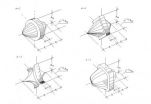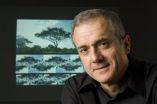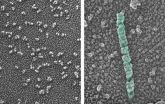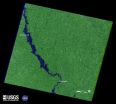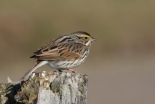(Press-News.org) BUFFALO, N.Y. -- A University at Buffalo-led research team has developed a mathematical framework that could one day form the basis of technologies that turn road vibrations, airport runway noise and other "junk" energy into useful power.
The concept all begins with a granular system comprising a chain of equal-sized particles -- spheres, for instance -- that touch one another.
In a paper in Physical Review E this June, UB theoretical physicist Surajit Sen and colleagues describe how altering the shape of grain-to-grain contact areas between the particles dramatically changes how energy propagates through the system.
Under "normal" circumstances, when the particles are perfect spheres, exerting force on the first sphere in the chain causes energy to travel through the spheres as a compact bundle of energy between 3 to 5 particle diameters wide, at a rate set by Hertz's Law.
But Sen and his collaborators have discovered that by altering the shape of the surface area of each particle where it presses against the next, it is possible to change how the energy moves. While this finding is yet to be demonstrated experimentally, Sen said that "mathematically, it's correct. We have proven it."
"What this work means is that by tweaking force propagation from one grain to another, we can potentially channel energy in controllable ways, which includes slowing down how energy moves, varying the space across which it moves and potentially even holding some of it down," said Sen, a professor of physics whose partners on the project included former graduate student Diankang Sun, now of New Mexico Resonance in Albuquerque, and Chiara Daraio, a professor at the California Institute of Technology.
"What we have managed to accomplish is we have broadened Hertz's theory with some extremely simple modifications," Sen said. "If I hit one end of the chain of particles, the perturbation will travel as an energy bundle. Now we can tune and control that energy." This modification to Heinrich Hertz's theory comes 130 years after Hertz's work was published, Sen said.
While the Physical Review E paper describes a granular, mechanical system, Sen believes the mathematical framework his team developed could be realized using electrical circuit systems as well. One practical application he foresees from such technology: "We could have chips that take energy from road vibrations, runway noise from airports -- energy that we are not able to make use of very well -- and convert it into pulses, packets of electrical energy, that become useful power."
"You give me noise," Sen said, "I give you organized bundles."
INFORMATION:
The study was supported by the Army Research Office and National Science Foundation.
The University at Buffalo is a premier research-intensive public university, a flagship institution in the State University of New York system and its largest and most comprehensive campus. UB's more than 28,000 students pursue their academic interests through more than 300 undergraduate, graduate and professional degree programs. Founded in 1846, the University at Buffalo is a member of the Association of American Universities.
Research outlines math framework that could help convert 'junk' energy into useful power
2011-07-22
ELSE PRESS RELEASES FROM THIS DATE:
Survey: Killing of bin Laden worsened Americans' views of US Muslims
2011-07-22
COLUMBUS, Ohio – Instead of calming fears, the death of Osama bin Laden actually led more Americans to feel threatened by Muslims living in the United States, according to a new nationwide survey.
In the weeks following the U.S. military campaign that killed bin Laden, the head of the terrorist organization Al Qaeda, American attitudes toward Muslim Americans took a significant negative shift, results showed.
Americans found Muslims living in the United States more threatening after bin Laden's death, positive perceptions of Muslims plummeted, and those surveyed were ...
Seeing the S-curve in everything
2011-07-22
DURHAM, N.C. – Esses are everywhere.
From economic trends, population growth, the spread of cancer, or the adoption of new technology, certain patterns inevitably seem to emerge. A new technology, for example, begins with slow acceptance, followed by explosive growth, only to level off before "hitting the wall."
When plotted on graph, this pattern of growth takes the shape of an "S."
While this S-curve has long been recognized by economists and scientists, a Duke University professor believes that a theory he developed explains the reason for the prevalence of this ...
After the revolution: Groups vie for minds, votes of Egyptians
2011-07-22
Los Angeles, (July 2011) — Despite helping to push Hosni Mubarak and his regime from power, Egypt's liberals and pro-democracy activists are having trouble moving from revolution to politics, according to a recent article in the World Policy Journal (published by SAGE).
In this in-depth look at the Egyptian political landscape, the article's author, Jenna Krasjeki, examines various groups vying for influence and public support in the run-up to elections this fall. One common characteristic that Krasjeski notes is the lack of organization in the groups of young, liberal ...
Evolution provides clue to blood clotting
2011-07-22
A simple cut to the skin unleashes a complex cascade of chemistry to stem the flow of blood. Now, scientists at Washington University School of Medicine in St. Louis have used evolutionary clues to reveal how a key clotting protein assembles. The finding sheds new light on common bleeding disorders.
The long tube-shaped protein with a vital role in blood clotting is called von Willebrand Factor (VWF). Made in cells that form the inner lining of blood vessels, VWF circulates in the blood seeking out sites of injury. When it finds them, its helical tube unfurls to catch ...
Landsat satellites track continued Missouri River flooding
2011-07-22
Flooding along the Missouri River continues as shown in recent Landsat satellite images of the Nebraska and Iowa border. Heavy rains and snowmelt have caused the river to remain above flood stage for an extended period.
A Landsat 5 image of the area from May 5, 2011 shows normal flow. In contrast, a Landsat 7 image from July 17 depicts flood conditions in the same location.
A national overview map of streamflow provided by U.S. Geological Survey (USGS) WaterWatch graphically portrays the immense geographic extent of flooding in the Missouri River basin.
Monitoring ...
A new breed: Highly productive chickens help raise Ugandans from poverty
2011-07-22
In the fight to improve global health, alleviate hunger, raise living standards and empower women in the developing world, chickens have an important role to play.
Jagdev Sharma, a researcher at the Center for Infectious Diseases and Vaccinology at Arizona State University's Biodesign Institute has been investigating the advantages of a more productive species of chicken for villagers in rural Uganda. He reports his findings this week at the American Veterinary Medical Association Meeting in Saint Louis, Missouri.
The star of this developing story is a type of chicken ...
Fermilab experiment discovers a heavy relative of the neutron
2011-07-22
Scientists of the CDF collaboration at the Department of Energy's Fermi National Accelerator Laboratory announced the observation of a new particle, the neutral Xi-sub-b. This particle contains three quarks: a strange quark, an up quark and a bottom quark (s-u-b). While its existence was predicted by the Standard Model, the observation of the neutral Xi-sub-b is significant because it strengthens our understanding of how quarks form matter. Fermilab physicist Pat Lukens, a member of the CDF collaboration, presented the discovery at Fermilab on Wednesday, July 20.
The ...
GOES satellite sees a triple header in the tropics
2011-07-22
The GOES-13 satellite captured a triple-header in the tropics today when it captured three tropical cyclones in one image in the Northern Hemisphere.
A visible image taken from the GOES-13 satellite on July 20 at 14:45 UTC (10:45 a.m. EDT) and shows a consolidating low pressure area called System 99L in the eastern North Atlantic Ocean, Tropical Storm Bret several hundred miles east of South Carolina, and a large Hurricane Dora off the west coast of Mexico. The image was created by the NASA/NOAA GOES Project at NASA's Goddard Space Flight Center in Greenbelt, Md.
System ...
It's no sweat for salt marsh sparrows to beat the heat if they have a larger bill
2011-07-22
Birds use their bills largely to forage and eat, and these behaviors strongly influence the shape and size of a bird's bill. But the bill can play an important role in regulating the bird's body temperature by acting as a radiator for excess heat. A team of scientists have found that because of this, high summer temperatures have been a strong influence in determining bill size in some birds, particularly species of sparrows that favor salt marshes. The team's findings are published in the scientific journal Ecography, July 20.
Scientists at the Smithsonian Migratory ...
Unlisted ingredients in teas and herbal brews revealed in DNA tests by high school students
2011-07-22
Take a second look at your iced or steaming tea. Guided by scientific experts, three New York City high school students using tabletop DNA technologies found several herbal brews and a few brands of tea contain ingredients unlisted on the manufacturers' package.
The teen sleuths also demonstrated new-to-science genetic variation between broad-leaf teas from exported from India versus small-leaf teas exported from China.
Guided by DNA "barcoding" experts at The Rockefeller University, an ethno-botanist at Tufts University and a molecular botany expert at The New York ...
